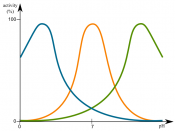1.Regulation is the life process by which organisms and cells respond to our constantly changing internal and external environment. This is important because an upset in homeostasis in any one of an organism's systems might result in an imbalance in the organism's homeostasis. In humans, regulation consists of the endocrine and nervous systems. The endocrine system is made up of many organs that produce hormones into the bloodstream. The nervous system carries messages in the form or nerve impulses throughout the body. Hormones and nerve impulses can bring about changes in the organism in response to the environment. Regulation coordinates body activities and adjusts them when internal or external environmental changes occur which helps maintain homeostasis within the body.
5. The nervous and endocrine systems are both part of the human regulatory system and help maintain homeostasis within the body. The nervous system is a network of nerve cells that carry electrochemical impulses through nerve fibers throughout the body.
It regulates the body's responses to internal and external stimuli. The endocrine system is responsible for chemical regulation in the body. Stimuli cause glands to secrete hormone into the bloodstream. When the chemicals reach a certain organ, a reaction occurs. Both the nervous and endocrine systems help the body adjust to internal and external environmental changes and coordinate body activities.
6.A trait that is controlled by a gene found on the sex chromosome is called a sex-linked trait. Most sex-linked traits are determined by genes found on the X chromosome, but not on the Y chromosome. Every male receives an X chromosome from his mother and a Y chromosome from his father, while a female receives an X chromosome from both her mother and father. It is more common for males to have sex-linked traits because males only...


